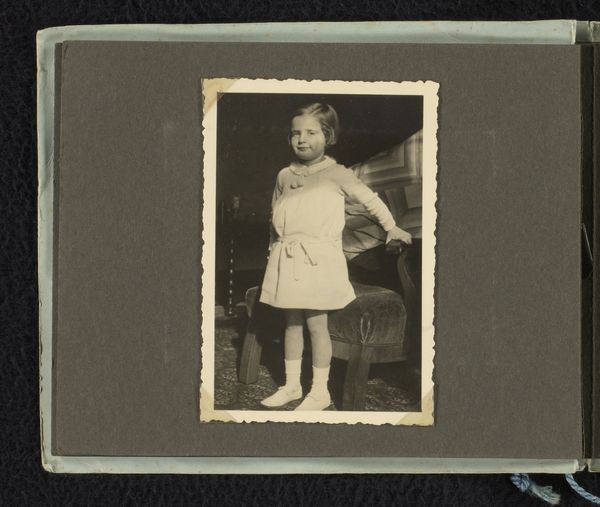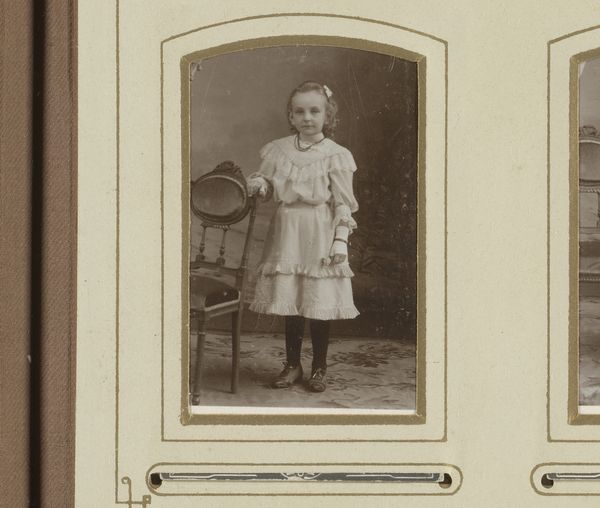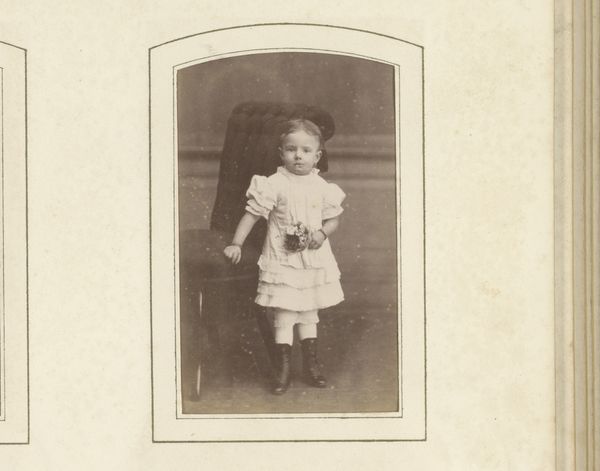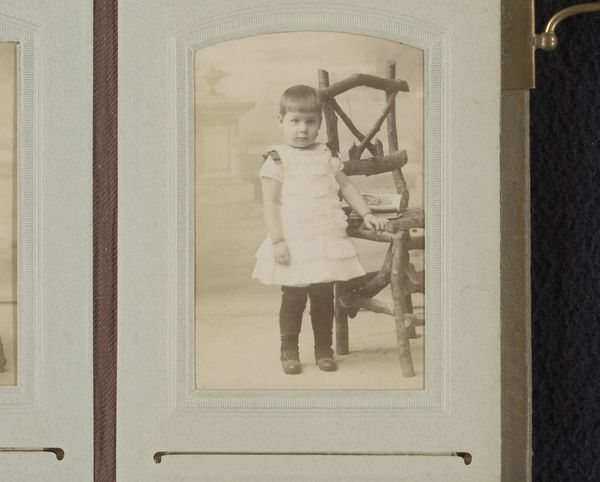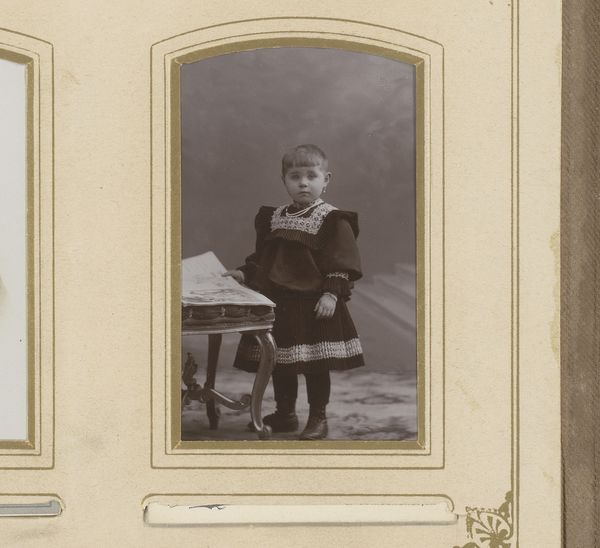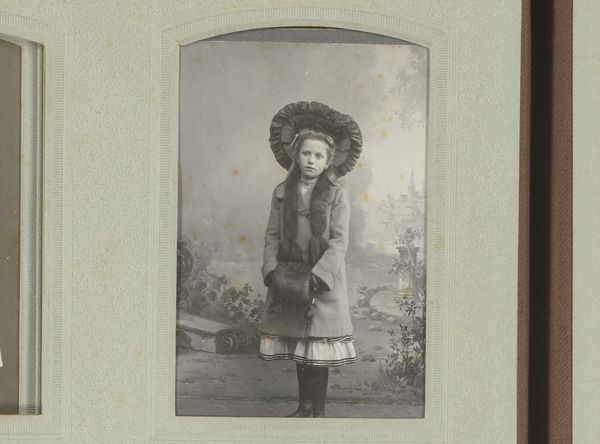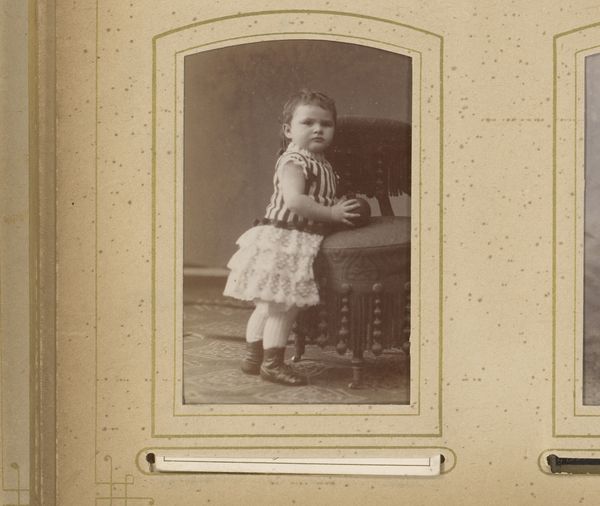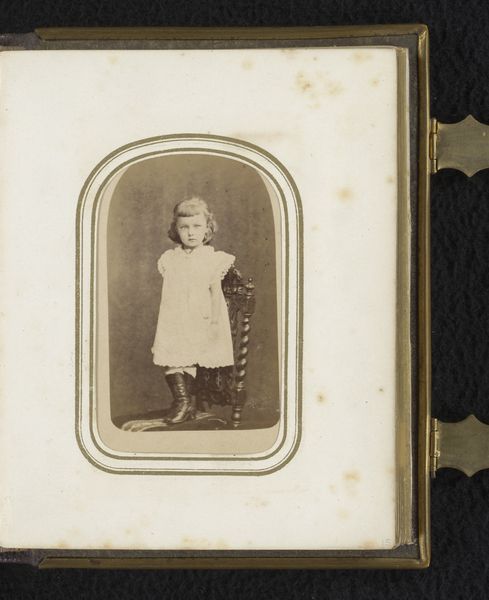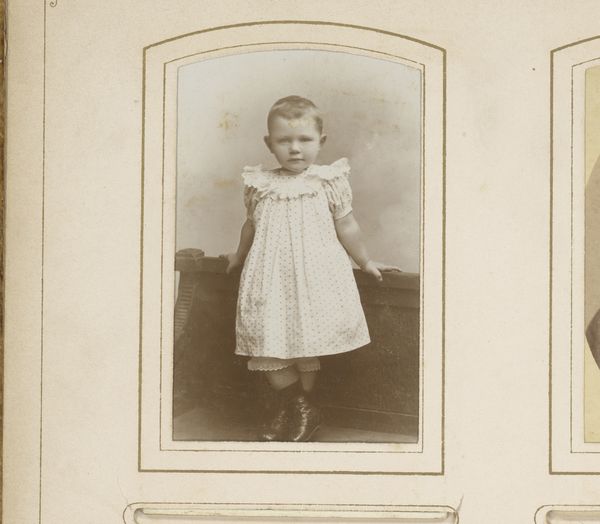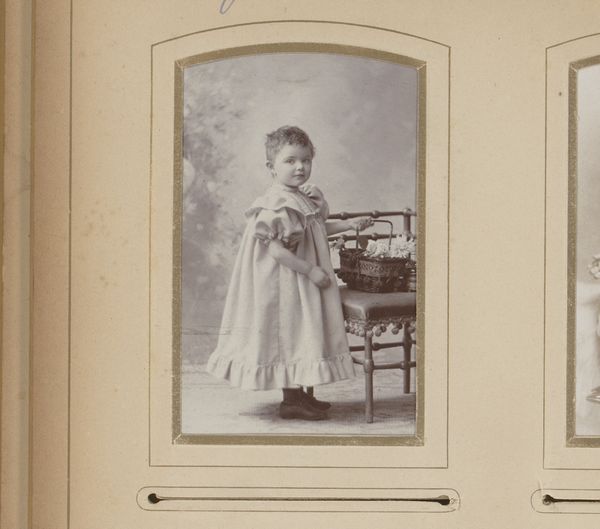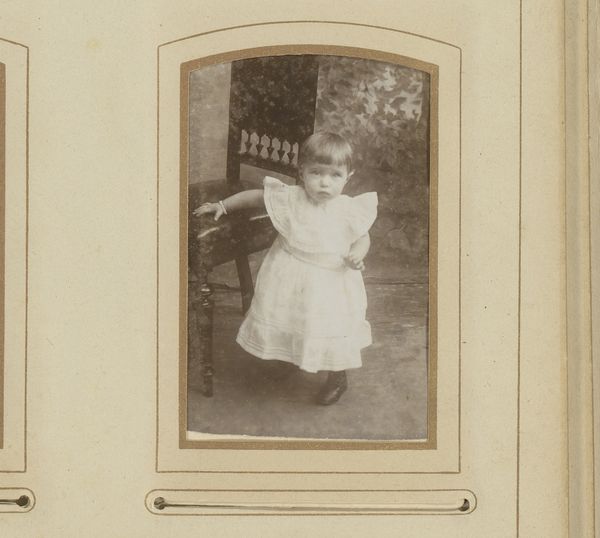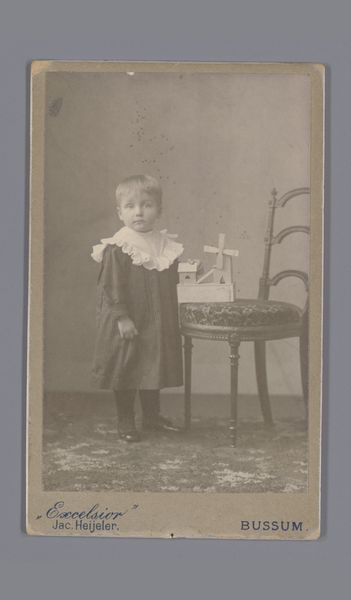
photography, gelatin-silver-print
#
portrait
#
photography
#
gelatin-silver-print
#
realism
Dimensions: height 107 mm, width 64 mm
Copyright: Rijks Museum: Open Domain
Editor: This is a gelatin-silver print, titled "Portret van Willy Scheffer" by Friedrich Carel Hisgen, made between 1900 and 1912. The sepia tone gives it such a nostalgic feeling. What symbols jump out at you in this photograph? Curator: The most potent symbol for me is, arguably, childhood itself. Consider the context: the late 19th, early 20th century. Childhood, as a distinct and precious phase of life, was becoming a more prominent cultural idea, particularly within the rising middle class. Editor: I see what you mean. What about the objects around her – the crib, her little dress, and bow? Do those contribute to the symbolism? Curator: Precisely. The crib, draped in white, speaks to innocence, purity, a protected space. The clothing, though simple, reflects a certain attention to presentation. These details communicate aspirations, perhaps even anxieties, surrounding upbringing. Think about what's being projected here, not just about Willy Scheffer, but about childhood's role in shaping the future. Editor: So, it’s about more than just capturing a likeness. It's conveying cultural values, too. Does the popularity of this sort of portrait during the period reinforce that? Curator: Absolutely. It suggests a collective desire to codify and celebrate childhood within a specific cultural framework. It's important to examine what’s included – and what's excluded – to fully grasp the image's intended message. Photography, here, serves as a cultural mirror, reflecting and reinforcing societal ideals. What's your perspective? Editor: That’s fascinating! It makes me realize there’s so much more to a seemingly simple portrait than meets the eye. It really holds a cultural and historical narrative about idealized childhood and middle-class aspirations of the time. Curator: Indeed. By understanding the symbolic language of the past, we gain a richer appreciation for both the artwork and the era it represents.
Comments
No comments
Be the first to comment and join the conversation on the ultimate creative platform.
